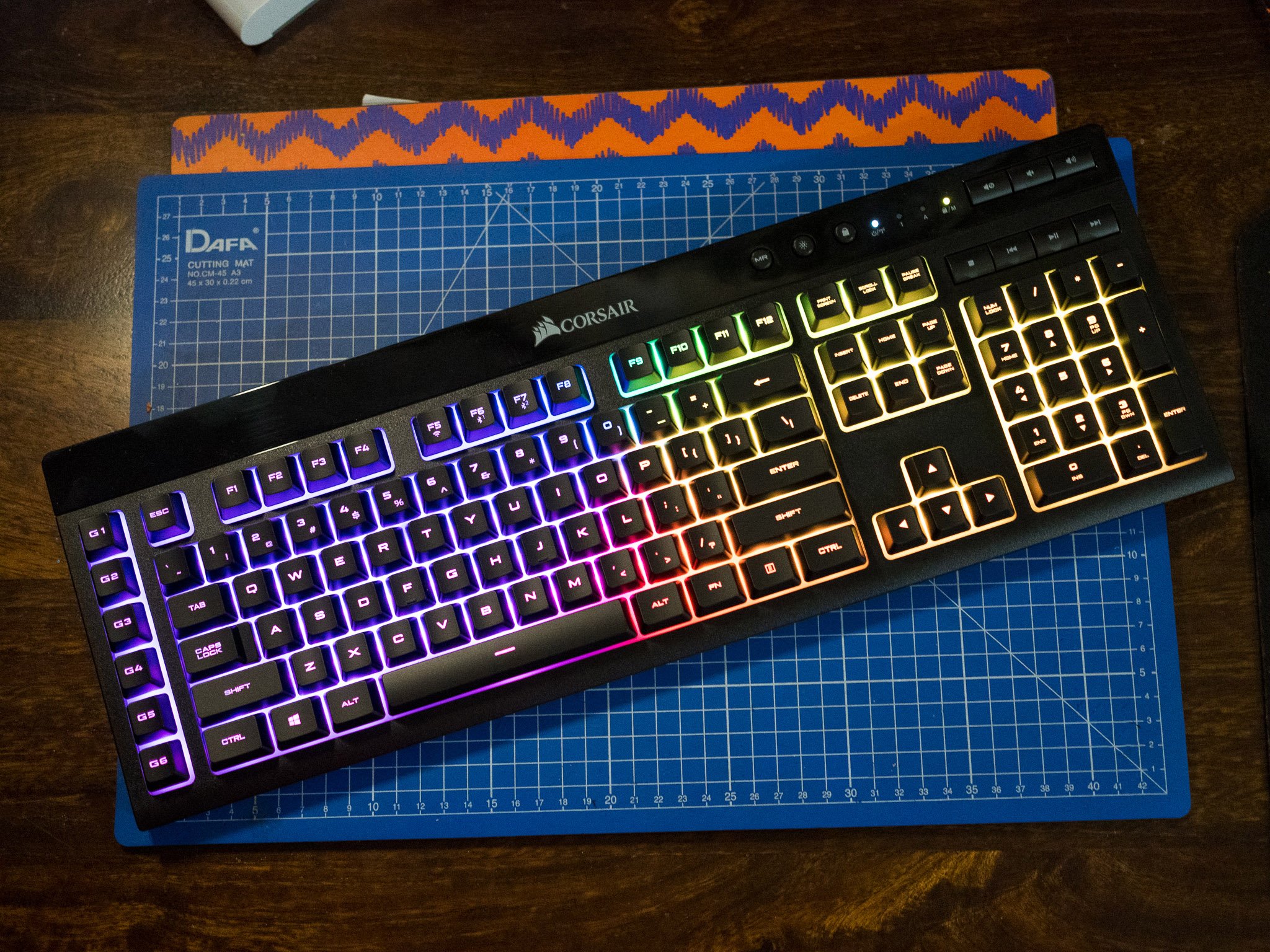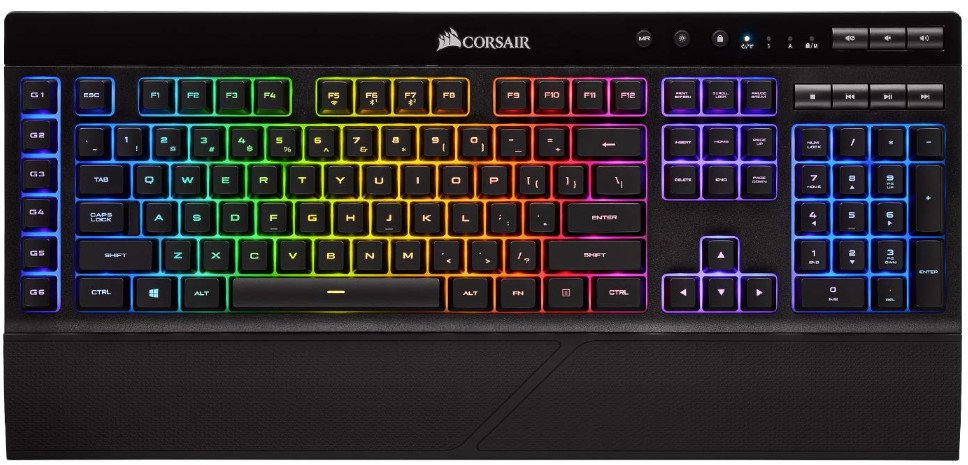Corsair unveils $100 K57 RGB Wireless gaming keyboard with Slipstream tech
Corsair's latest gaming keyboard has sub-1ms wireless connectivity and 60% brighter LEDs.

What you need to know
- Corsair has unveiled its latest gaming keyboard at Gamescom.
- The K57 RGB Wireless connects over Corsair's 2.4GHz Slipstream tech or Bluetooth 4.2.
- The keyboard has a 35-hour battery life with RGB LEDs enabled, and 175 hours without.
- You get rubber dome switches with 8-key roll-over, and the keyboard is now available for $100.
Corsair has debuted its latest gaming keyboard at Gamescom. The K57 RGB Wireless leverages the company's Slipstream tech to deliver sub-1ms wireless connectivity over 2.4GHz, and you also have the option of pairing the keyboard via standard Bluetooth 4.2.
The K57 RGB eschews mechanical switches for a membrane layout, but the keys are mounted above the chassis. You also get six macro keys on the left that can be customized via Corsair's iCUE software. They have decent tactile feedback all things considered — my main keyboard is a K95 RGB Platinum, and while the K57 doesn't have the same feedback as the Cherry MX Brown switches, they are quiet.
The keyboard itself is light thanks to the plastic chassis, and you get multimedia keys along with volume controls above the numpad. There's also a power toggle, a detachable wrist rest, and a Micro-USB port for when you need to charge the keyboard or use it in wired mode. The dongle for the 2.4GHz Slipstream mode is tucked away on the right.
Another highlight of the keyboard is the CAPELLIX LEDs, which provide 60% brighter illumination while drawing less power. As such, Corsair says the keyboard will last up to 35 hours even with the LEDs on, and 175 hours without backlit illumination. You also get individual key illumination and the ability to set custom lighting zones and different lighting effects via iCUE.
I'll have a detailed review out early next week, but if you're interested, the K57 RGB Wireless is available right now for $100.

Corsair's latest gaming keyboard has sub-1ms wireless connectivity, rubber dome switches that have decent tactile feedback, and highly customizable RGB lighting. Combine that with a 35-hour battery life, multimedia keys, and six macro buttons, and you get a fantastic keyboard for $100.
All the latest news, reviews, and guides for Windows and Xbox diehards.

Harish Jonnalagadda is a Senior Editor overseeing Asia for Android Central, Windows Central's sister site. When not reviewing phones, he's testing PC hardware, including video cards, motherboards, gaming accessories, and keyboards.
